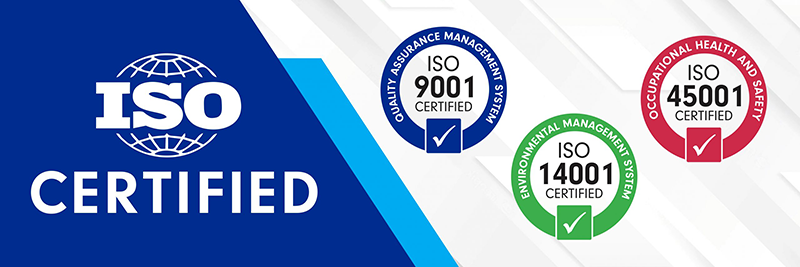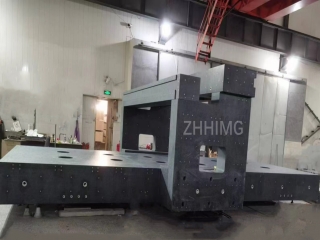First, the advantages of granite base
1. High rigidity and stability
Granite has a high density (2.6-3.1g /cm³), and Young's modulus (elastic modulus) can reach 50-100 GPa, much higher than ordinary steel (about 200 GPa), but because of its isotropic crystal structure, it almost does not have plastic deformation in long-term use. Compared with metal materials, granite thermal expansion coefficient is very low (about 5×10⁻⁶/℃), in the temperature fluctuation environment can still maintain excellent dimensional stability, avoid due to thermal expansion cold contraction affect equipment accuracy.
2. Excellent vibration reduction performance
The internal crystal structure of granite has high internal damping, which can effectively absorb high-frequency vibration and reduce resonance phenomenon. Compared with the metal base, granite has a stronger vibration attenuation capacity in the range of 20Hz-1kHz, providing a more "clean" initial environment for the active vibration isolation system and reducing the burden of subsequent active control.
3. Corrosion resistance, non-magnetic, wide applicability
Granite chemical stability, acid and alkali corrosion resistance, will not rust or oxidation, suitable for clean room, high humidity or corrosive environment. In addition, granite is a non-magnetic material, will not interfere with precision instruments (such as electron microscopy, magnetic measuring equipment, etc.), suitable for electromagnetic sensitive application scenarios.
4. Long service life, low maintenance cost
Granite hardness is high (Mohs hardness 6-7), wear resistance, long-term use is not easy to wear or deformation, the service life can reach more than 20 years. Compared with metal materials, it does not require regular anti-rust treatment or lubrication, and maintenance costs are extremely low.
5.High flatness and surface finish
Through precision grinding and polishing, the flatness of the granite base can reach 0.005mm/m², and the surface roughness Ra≤0.2μm, ensuring the perfect fit with precision equipment (such as optical platform, laser interferometer) and reducing assembly errors.
Two, the shortcomings of granite base
1. Large weight, difficult to carry and install
Granite has a high density and is heavier than aluminum or steel at the same size, making the handling and installation of large platforms require specialized equipment (such as forklifts or lifting tools), increasing deployment costs.
2. High brittleness, weak impact resistance
Although granite has a high hardness, it is a brittle material and may crack or collapse when subjected to strong impact (such as falling or collision). Therefore, extra care should be taken during transportation and installation to avoid severe vibration or impact.
3. The processing is difficult and the customization cost is high
The processing of granite requires special machine tools (such as CNC stone engraving machine) and diamond tools, and the processing speed is slow, resulting in the high cost of customization of complex structures (such as threaded holes, special-shaped grooves) and a long delivery cycle.
4. Sudden temperature changes may cause microcracks
Although granite has good thermal stability, if it encounters extreme temperature changes (such as rapidly moving from a low temperature environment to a high temperature environment), small stress cracks may occur inside, and long-term accumulation may affect the strength of the structure. Therefore, it should be used with caution in environments with large temperature differences.
5. No welding or secondary processing
The metal base can be modified by welding or machining, but once the granite is formed, it is almost impossible to make structural adjustments (such as drilling, cutting), so the design stage must be precisely planned to avoid later modifications.
Post time: Apr-11-2025


